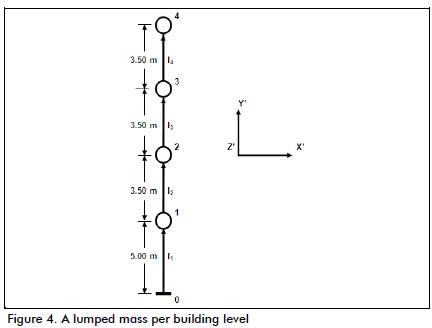Intuitively, building can be represented as a lumped mass model ( the taller the merrier!):
Assuming a building is a lumped mass cantilever column also makes the global stability checks easier because building codes often assume building structure as a cantilever column.
But if my building structure is discretized and response analyzed in terms of FEM ( with column/beam as line element, and slab/wall as area element), then is it possible that, from the stiffness matrix and everything I have in FEM, I can still approximate the structure as a lumped mass model? If yes, how to do it? How to calculate the errors involved?
A practical application of doing this is in this question. But for the purpose of this question, let's assume that I do it for academic purpose and don't really want to care about the application.



